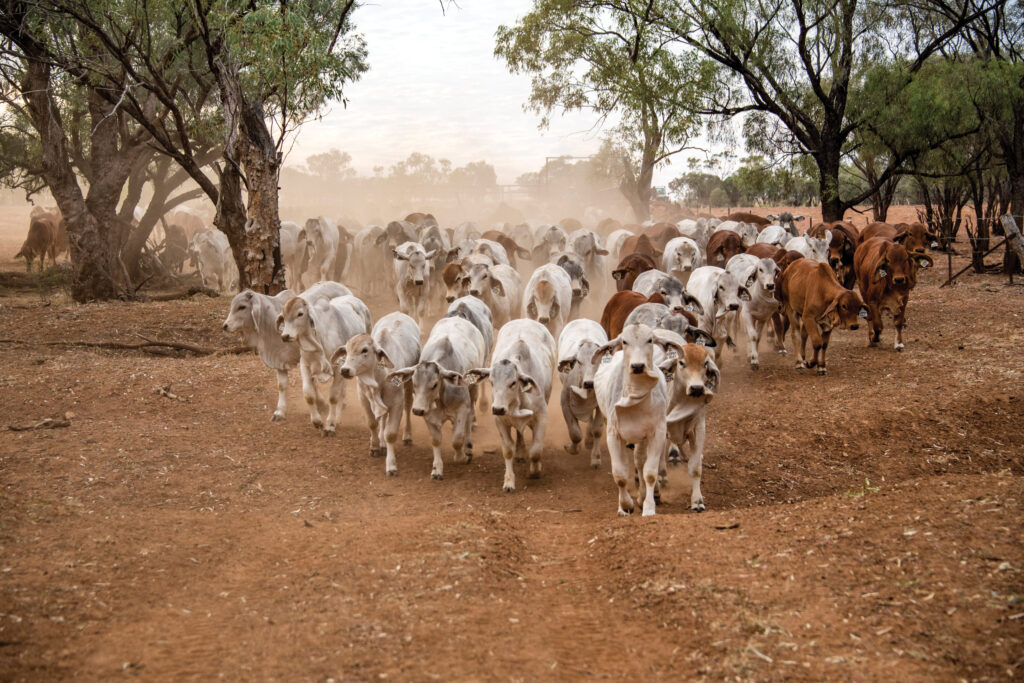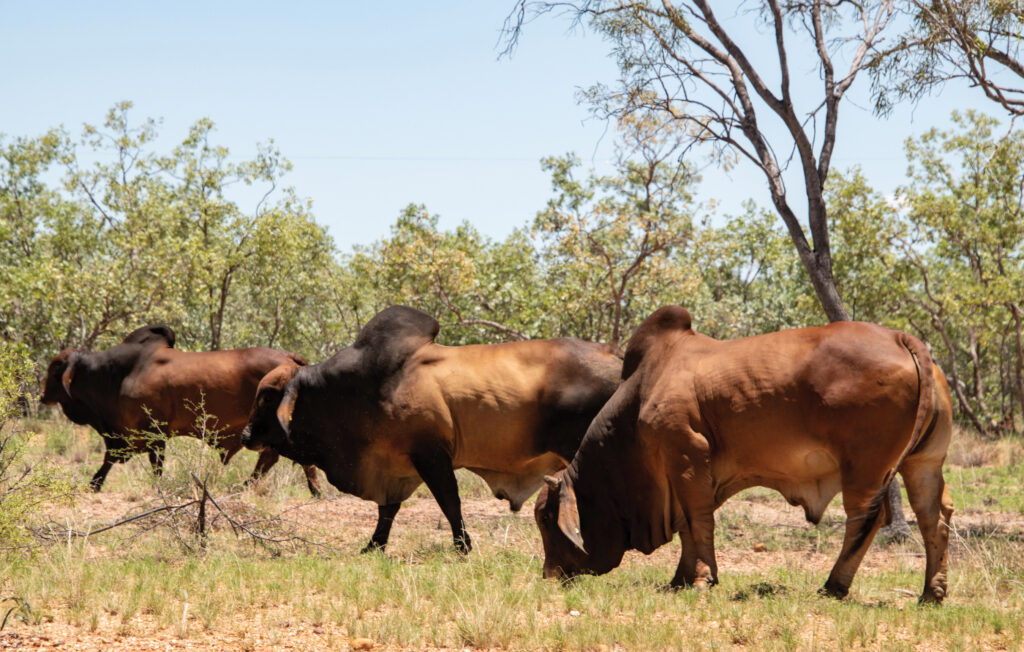By Lea Coghlan; photos by Jacqueline Curley
A decision to introduce polled genetics into their stud herd more than two decades ago is paying dividends for the Curley family, Gipsy Plains Brahman Stud, Cloncurry.
With their origins coming from the commercial beef industry, the family is working towards presenting its largest ever offering of polled stud bulls to the market in 2024, remarkably, only a meagre four years after the family’s stud herd was decimated in the 2019 northwest Queensland floods.
The Curley family – Robert and Jacqueline Curley and son Clayton – began breeding replacement bulls for their Northern Territory property, Benmara, in the 1980s. On the sale of Benmara in 1997 they then focused on selling into the commercial herd bull market.
A conversation between Robert Curley and Don McDonald, friend and owner of one of Australia’s largest beef cattle operations – who was searching for good quality Brahman bulls – triggered a supply arrangement that continues today, and marked the launch of the family’s stud.
The stud was originally registered at Vee Isla Brahman Stud in 1997 and renamed Gipsy Plains Brahman Stud in the early 1990s.
The Curley family are unashamedly passionate about the Brahman breed, having lived and breathed Brahmans for two generations, with Clayton and wife Erin’s nine-year-old son Ryan, shaping up as the third-generation stud master.
The stud is run across the family’s three Cloncurry properties – Gipsy Plains, Vee Isla and Cotswold – with around 2,500 stud quality breeding age females which feature an equal composition of red and grey Brahmans.

Next year shapes as a watershed year for Gipsy Plains Brahman Stud, with the Curley family expecting to offer around 300 polled red and grey Brahman bulls to the market, along with 200 horn bulls.
It’s testament to the family’s tenacity and resilience to recover from the 2019 natural disaster.
“We lost about 3,500 cattle in the floods and most of those were younger cattle with new genetics,” Jacqueline said.
“We had 700 stud heifers in one paddock and 90 per cent of those would have been polled animals.
“We may have rescued about 150 of those; so it’s been a long expensive, genetic recovery.”
The stud is founded on three main breeding strategies, with temperament being top priority.
“In today’s world of many young and inexperienced staff on commercial beef properties, the docility of livestock is becoming more important in relation to workplace health and safety,” Jacqueline said.
“We strive to maintain docility of the highest possible standard.”
The family focuses on the correct phenotype to produce an animal that is financially rewarding and visually appealing, and has embraced genomic DNA testing.
“We have logged thousands of individual Brahman animals into the system since about 1993, however many pedigree records were lost via drought management, early weaning and natural disaster deaths,” Jacqueline said.
“This year we have begun recording all of our stud calf drop with the Brahman society to achieve better future accuracy with genomic EBV data.
“This data will help us implement informed breeding decisions to suit our target market.
“Our goal, which we will hopefully achieve in the near future, is a predominant polled herd.
“Genomics accelerates this objective.”
When it comes to Brahman genetics, the Curley family respects the legacy of the Brahman and equally embraces the evolution of innovative practices that will shape the future of not only the breed but the Australian beef cattle industry.
“We believe EBV data will be a key cornerstone of the financial future of the Brahman industry.”

With repeat clientele stretching over decades in Queensland and the Northern Territory, the family’s focus is firmly on producing animals for the commercial herd bull market.
“We showcase a small number of the type of herd bulls that we have available for paddock sales as a sample at the Big Country Sale in Charters Towers,” Clayton said.
“We generally retain our top seedstock for our own purposes, but next year we have earmarked several of our better quality bulls which will be offered at the Big Country Sale.”
Repeat clientele aside, the Curley family has enjoyed considerable success in the sales arena via other stud’s selling top priced bulls by Gipsy Plains sire genetics, by far the most exciting being at the Rockhampton Brahman Week Sale in October this year.
The top priced red Brahman bull, Tarramba True North 4664 (IVF) (PP), offered by Gunthorpe Cattle Company and purchased by Reedybrook B Brahmans for $120,000, was by a current Gipsy Plains sire, Y3K Billionaire 9002 (PP).
“He’s only five-years-old and has a lot of progeny coming through so it’s going to be exciting to continue to see how they perform,” Clayton said.
“Billionaire’s first progeny included a four-month-old heifer which was sold for $40,000 in 2022.”
The second top red Brahman bull, Mountain Springs Nashville (ET) (PS), offered by EE and JM Mollenhagen and Sons and purchased for $100,000 by Gigoomgan Pastoral, was by a previous Gipsy Plains sire, Fairy Springs Duracell 3606 (PS).
“To have a stake in the two highest selling red Brahman bulls is something I have never seen before and unlikely to see again in my lifetime,” Clayton said.
“It confirms that we have been buying the right type of cattle.
“We have been buying sires since early 1970s at RBWS and associated sales so we have a very diverse genetic base in our breeding herd.

